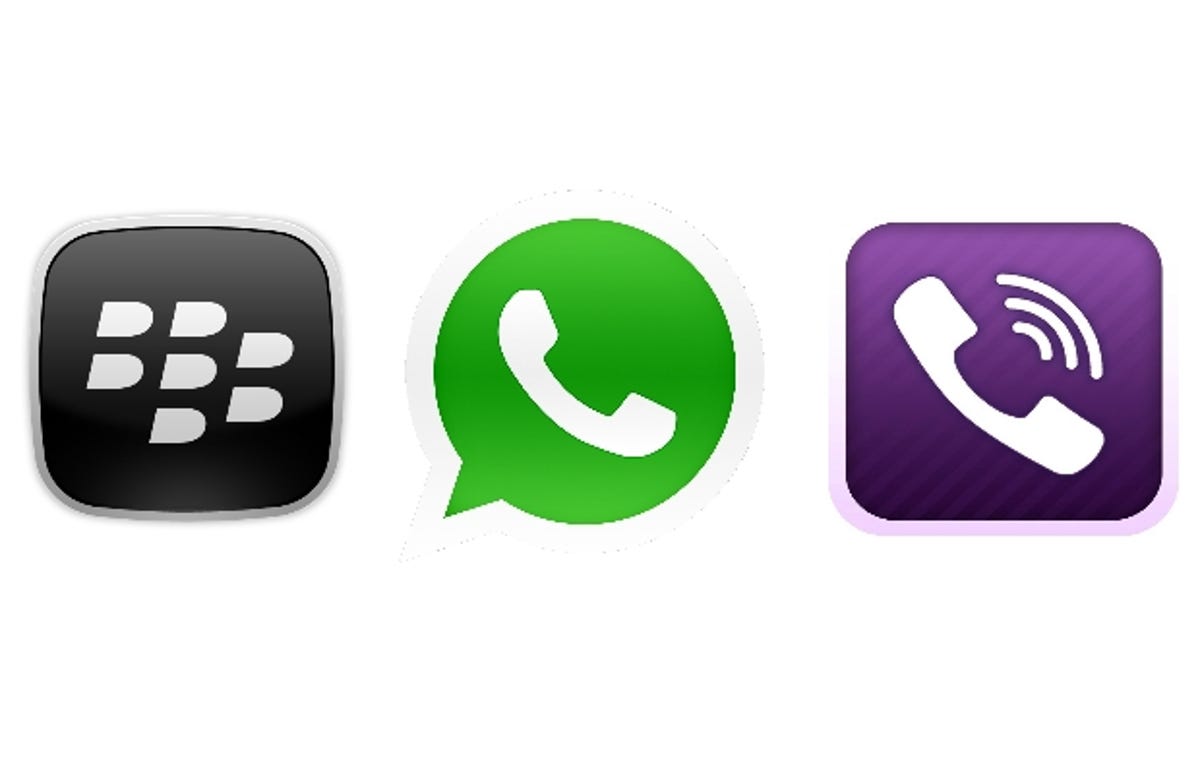
BlackBerry announced earlier this week at BlackBerry Live in Florida that it’s finally bringing BlackBerry Messenger (BBM) to Android phones and iPhones this summer.
It’ll be going head to head with messaging apps WhatsApp and Viber, both of which offer very similar services. I’ve pitted all three against each other to see which should take pride of place on your phone.
iMessage also lets you send messages and photos using an Internet connection, but it’s restricted to iOS devices only. This battle is between cross-platform services only so I have not included it here.
BBM
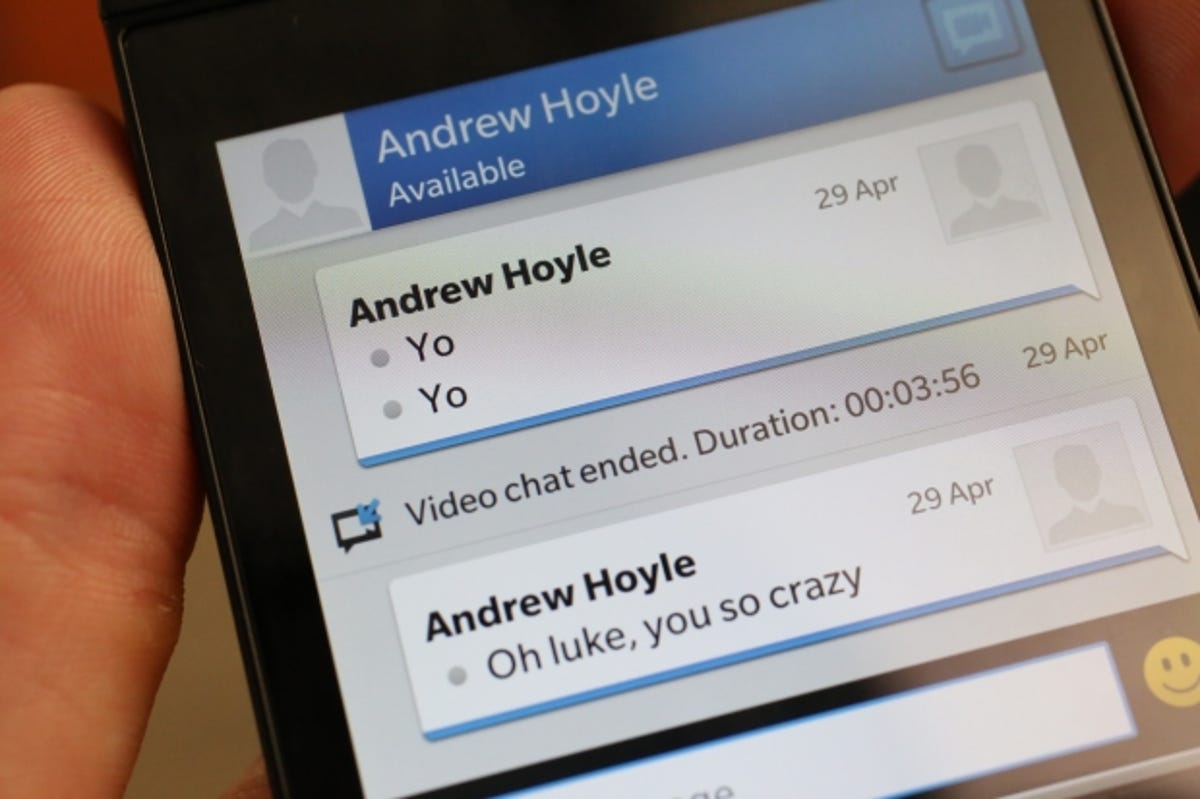

PriceFree. It’s installed as standard on a BlackBerry phone and will be available as a free download on iOS and Android when it launches in the summer.
Features
The basic BBM service you’ll find on the majority of BlackBerry phones provides instant messaging and VoIP calls (phone calls over the internet, rather than using your minutes allowance). On the latest BlackBerry 10 devices — the Z10 and Q10 — you’ll benefit from video calling too.
You’ll also be able to share your screen, letting your friend see exactly what you’re doing on your phone during the call. That’s particularly handy if you want to give a quick presentation to a colleague ahead of a meeting or just to flick through all the images you took of your cat over the bank holiday weekend.
BlackBerry has said that it’ll be bringing messaging first to Android and iPhone, with video calling and screen sharing to follow later.
Ease of use
To use BBM on existing BlackBerry handsets you’ll need a pin number. Adding contacts to the service requires you to get their pin and add it to the app. Both WhatsApp and Viber integrate with your existing contacts — any of your contacts who use the apps can be contacted without any extra effort.
BlackBerry hasn’t said if it’ll still be using these pins, but if so, it’s immediately at a usability disadvantage to its competitors.
The app itself is fairly straightforward to use — it certainly didn’t stop hordes of kids flocking to the service before other free services became available. The BB10 iteration isn’t exactly pretty, but it’s difficult to judge how it performs on other devices until we’ve gone hands on with the full app.
Viber
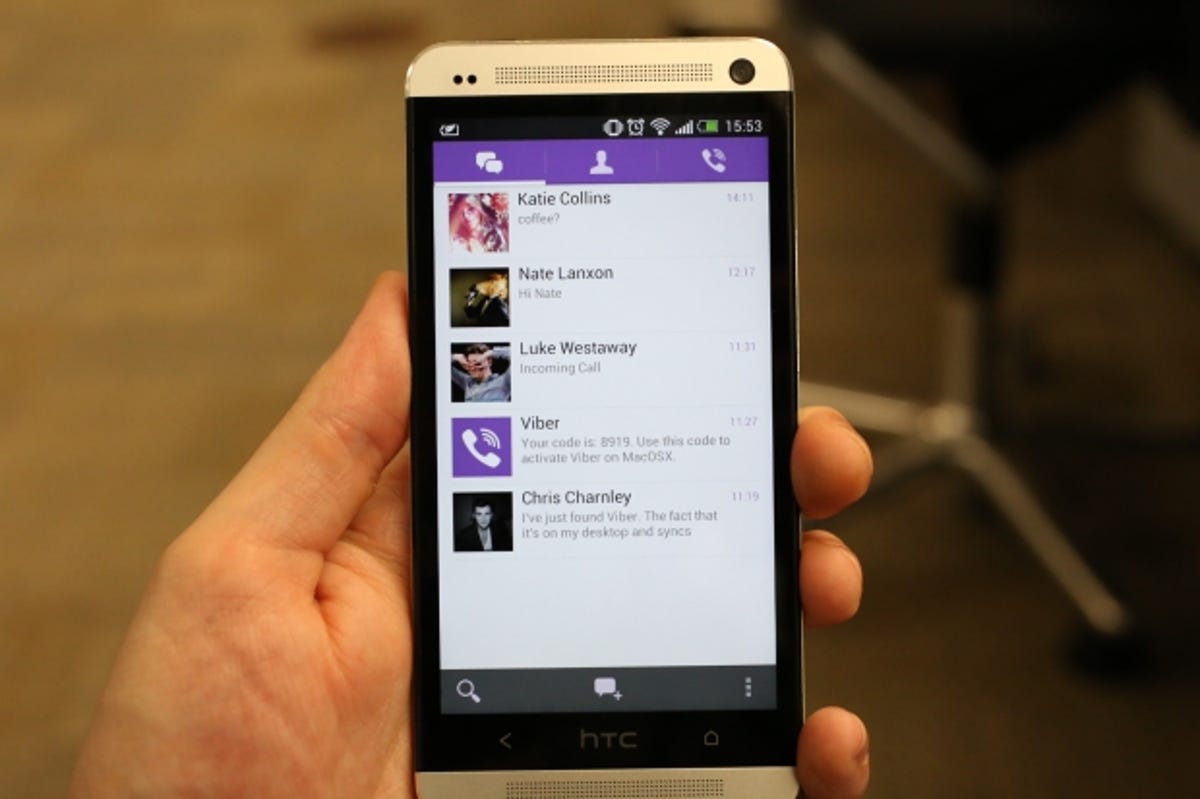

PriceFree. Viber currently doesn’t make any money from the app as it doesn’t allow ads. It has said that it will be offering extra services such as ‘stickers’ (more elaborate emoticons) for a small charge.
Features
Viber is available on the widest choice of platforms. You’ll find it on the iPhone, Android phones, Windows Phone 8, BlackBerry — although not BlackBerry 10 yet — Windows desktop, Mac OS X and even Symbian and Samsung’s Bada software. There’s no iPad version yet, but I don’t expect it’ll be long before we see one.
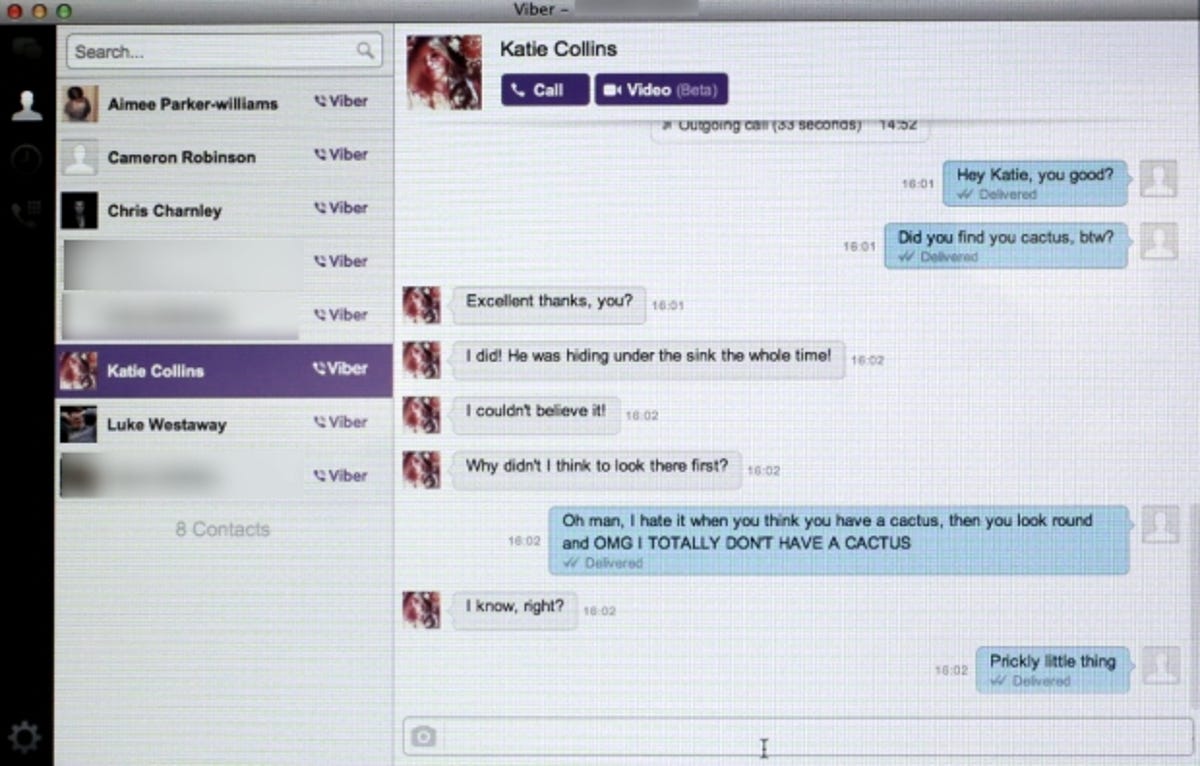

Viber is available for Windows or Mac OS desktop computers.
Even though you’ll need to set the service up on your mobile using your phone number, you can then install the app on any number of devices across all platforms. It’ll sync your messages and contacts, letting you see and carry on conversations on your PC that you were having on your phone. Ever wanted to subtly send texts at work but don’t want to be seen with your phone in your hand? Viber will help. Sorry, boss.
Ease of use
The interface is clean and simple across all platforms. It syncs with your existing phone contacts, letting you immediately see which of your friends already have the app installed. On Android phones, Viber will be available as an option to share your photos from the photo gallery.
I did find some annoying bugs, though. The service lets you make voice calls, but when I tried on my HTC One, the screen went black and I couldn’t navigate back. I had to exit and kill the app to fix it. The friend I was calling didn’t have the same problem on their iPhone 4, however.
Viber doesn’t yet allow for video calling on mobile devices, but the feature is currently in beta mode on the desktop. It’s buggy here too, though. I tried to make a video call from my MacBook Air, but it swore blindly that I didn’t have a webcam connected. Apple’s FaceTime had no such problems.
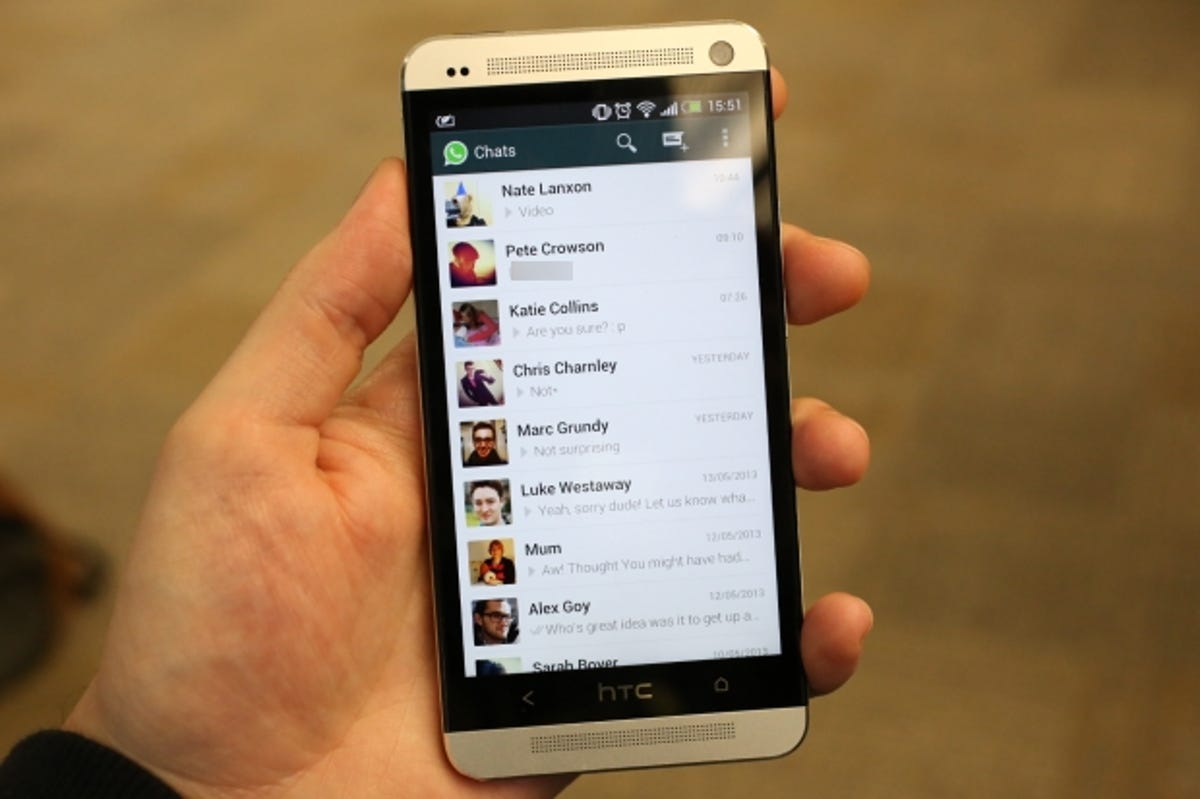

PriceFree for the first year then 69p per year after that. Yes, it’s a charge, but it’s hardly an extortionate one.
Features
WhatsApp is available on Android, iOS, BlackBerry, Windows Phone 8 and Symbian phones. It too is an instant messaging-style text service that also allows you to send photos and videos. You can also engage in group chats as well as send map locations — particularly handy if you and your mates are trying to decide which bar to prop up for the evening.
Ease of use
You perform the initial setup using your phone number and it can then sync to your contacts. Any contacts who already use WhatsApp will appear in the app’s contact list.
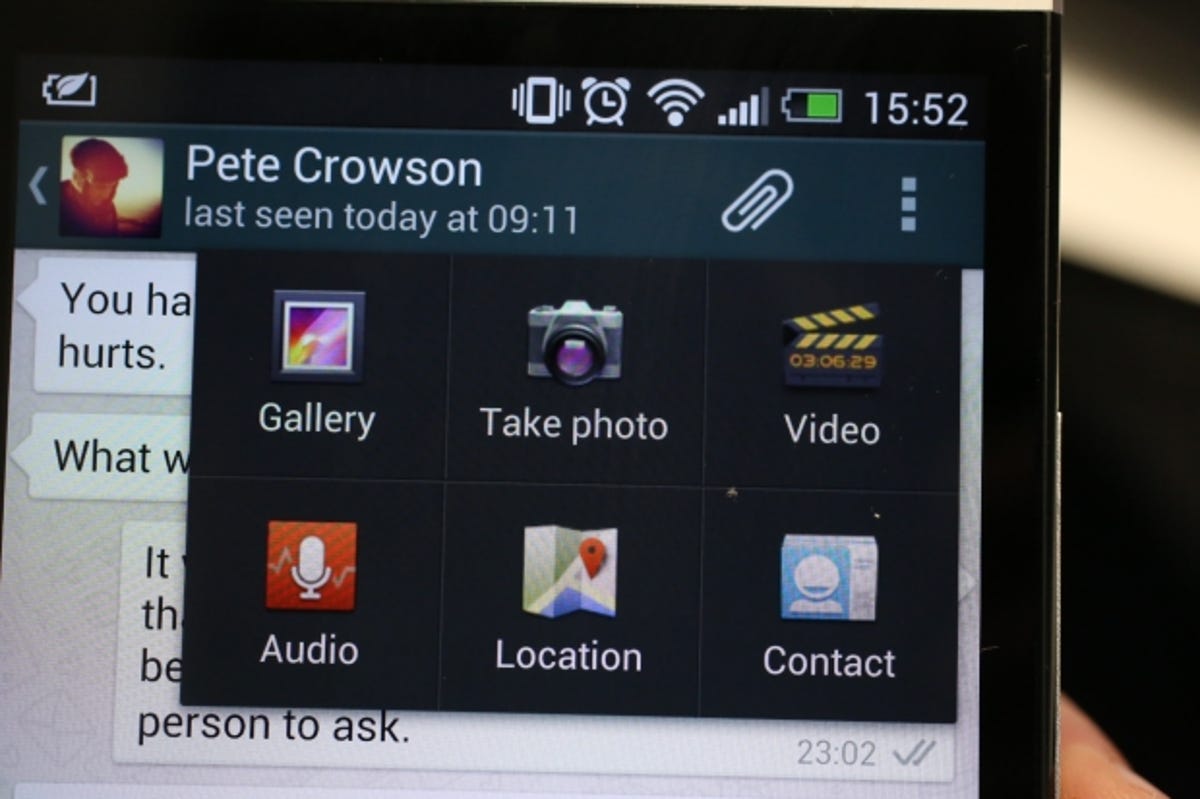

WhatsApp lets you send photos, videos, audio, map locations but you can’t video call.
Unlike Viber, WhatsApp must be linked to your phone with your SIM card and phone number, acting more like the built-in SMS tool than an IM client. That means you can’t use it on more than one device, and there’s no desktop software you can use either.
If you use more than one phone at once then you’ll have to switch to your ‘main’ phone to use WhatsApp. If you switch to a new phone, you’ll have to perform the setup fresh each time, and you won’t be able to see older conversations.
Conclusion
All three services offer the same core functionality of sending text and photo messages for free over an Internet connection. While Viber has the benefit of being available on multiple devices across different platforms, it’s let down by very buggy software. If it can sort out the issues then it could be a superb app, regardless of which phone you choose.
Without knowing exactly what the BBM app will be like on iOS or Android, it’s difficult to know how well it will stack up against the others. If it brings all of its features — including video calling and screen sharing — for free and lets you use it across multiple devices, it could offer some genuine competition to WhatsApp and Viber.
We have a while to wait before we can give it a proper go, leaving WhatsApp and Viber plenty of time to add new features themselves. In the meantime, let me know your messaging platform of choice in the comments below or over on our Facebook page.



